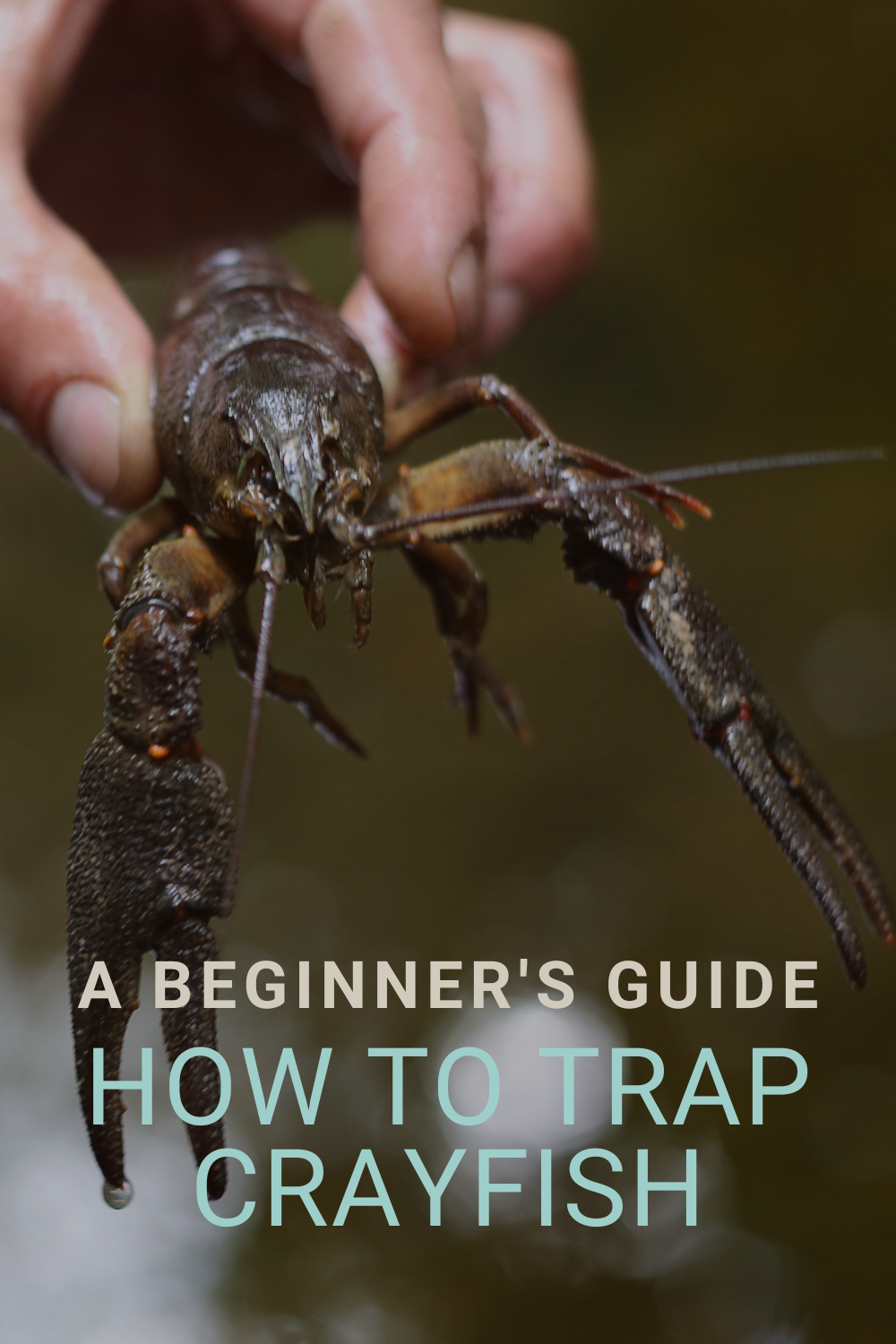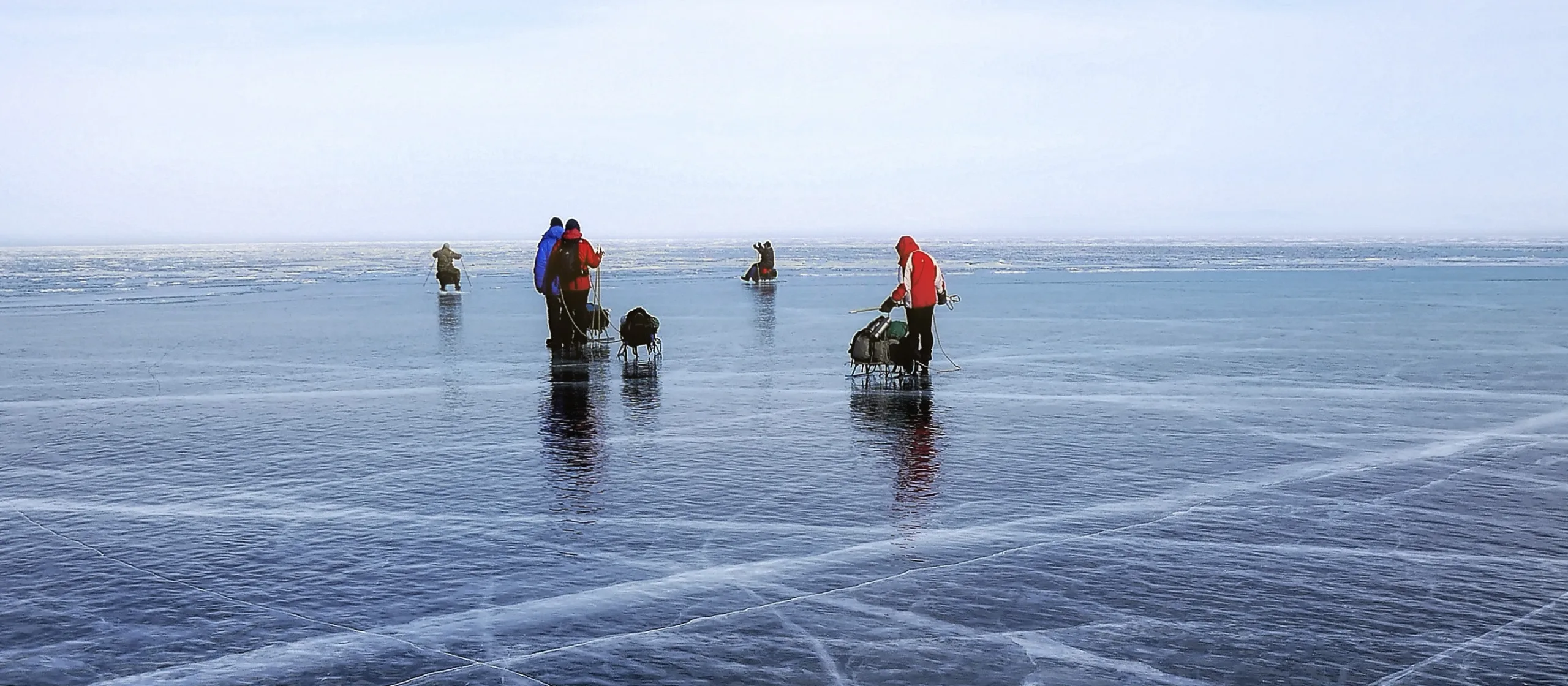Crayfish trapping is a fun and rewarding activity that can be enjoyed by people of all ages. Whether you're looking to catch crayfish for food or just for fun, there are a few things you need to know before you get started. In this article, we'll cover the basics of crayfish trapping, including the equipment you'll need, the best places to set your traps, and some tips for increasing your catch.

First, let's talk about the equipment you'll need. The most important piece of equipment for crayfish trapping is the trap itself. There are many different types of traps available, but the most common are wire mesh traps and plastic traps. Wire mesh traps are more durable and can be reused for multiple seasons, while plastic traps are cheaper and easier to transport. You'll also need bait to attract the crayfish, such as fish heads, chicken liver, or canned cat food. Finally, you'll need a pair of gloves to protect your hands from the crayfish's sharp claws.
Understanding Crayfish and Their Habitat

As we begin to trap crayfish, it is important to understand their habitat and behavior. By doing so, we can increase our chances of catching them.
Species Identification
Crayfish, also known as crawdads or mudbugs, are freshwater crustaceans that can be found in a variety of bodies of water such as ponds, creeks, lakes, and rivers. There are over 500 species of crayfish in North America alone, with different species having unique physical characteristics and behavior.
Some common species of crayfish include the Red Swamp Crayfish, White River Crayfish, and the Northern Clearwater Crayfish. It is important to identify the species of crayfish in your area, as some may be protected or invasive.
Preferred Habitats
Crayfish prefer habitats with slow-moving or still water, and plenty of vegetation for cover. They also prefer muddy or sandy bottoms, as they use these areas to burrow and create their homes.
In streams and rivers, crayfish can be found hiding under rocks and logs. In ponds and lakes, they can be found near the shorelines and in shallow areas. It is important to note that crayfish are most active at night, so trapping them during the evening or early morning hours may increase your chances of success.
Read More: Smoking Salmon in a Smoker – A Step-by-Step Guide
In conclusion, understanding crayfish and their habitat is crucial to successfully trapping them. By identifying the species in your area and knowing their preferred habitats, you can increase your chances of catching these freshwater crustaceans.
Crayfish Trapping Essentials

When it comes to trapping crayfish, there are a few essentials that we need to keep in mind to ensure a successful catch. In this section, we'll cover the three most important factors to consider: choosing the right trap, bait selection, and setting up your trap.
Choosing the Right Trap
There are many types of traps available for catching crayfish, but the most common ones are funnel traps and box traps. Funnel traps are typically made of wire mesh and have a funnel-shaped entrance that leads to the bait. Box traps, on the other hand, are made of plastic or metal and have a one-way entrance that prevents the crayfish from escaping.
When choosing a trap, consider the size of the crayfish in your area. If you're targeting larger crayfish, a box trap may be more effective. However, if you're catching smaller crayfish, a funnel trap may be a better option.
Bait Selection
Crayfish are omnivorous and will eat just about anything, but some baits are more effective than others. Chicken, fish, and oily fish like salmon are all great options for attracting crayfish. You can also use cat food, hot dogs, corn, shad, herring, or pogies as bait.
To make your bait more enticing, consider using bait boxes or bait jars. These containers will keep your bait fresh and prevent it from washing away in the water.
Setting Up Your Trap
When setting up your trap, it's important to choose the right location. Look for areas with slow-moving water, such as streams or ponds. Crayfish are also attracted to rocks and other underwater structures, so placing your trap near these areas can increase your chances of catching crayfish.
If you're using an open trap, make sure to anchor it securely to the bottom of the water. Closed traps, on the other hand, can be hung from a rope or set on the bottom of the water.
By following these essential tips, you'll be well on your way to catching crayfish like a pro. Happy trapping!
Effective Crayfish Trapping Techniques
When it comes to trapping crayfish, there are a few techniques that can help increase your chances of catching them. In this section, we'll cover two key aspects of crayfish trapping: location and timing, and trap placement and retrieval.
Location and Timing
Crayfish are most active during the night, so it's best to set your traps in the late afternoon or evening and check them early the next morning. Look for areas with a lot of rocks and other debris in the water, as crayfish like to hide in these areas.
It's also important to note that different species of crayfish prefer different types of habitats. For example, some species prefer shallow water while others prefer deeper water. Do some research on the species of crayfish in your area to determine the best location for your traps.
Trap Placement and Retrieval
There are several types of traps that can be used to catch crayfish, including nets, collapsible traps, and trap doors. Regardless of the type of trap you use, there are a few key things to keep in mind when placing and retrieving them.
First, make sure your trap is securely anchored in place. You can use rocks, a bucket filled with rocks, or a weight to keep the trap from moving in the water.
When placing the trap, make sure it's in an area where crayfish are likely to be present. Look for areas with a lot of rocks and other debris in the water, as crayfish like to hide in these areas.
Finally, when retrieving the trap, be sure to handle it carefully. Crayfish have sharp pincers and can be dangerous if mishandled. Use a dip net or small opening to remove the crayfish from the trap, or wear gloves if you need to handle them directly.
Overall, trapping crayfish can be a fun and rewarding activity. With the right techniques and equipment, you can increase your chances of catching these fascinating crustaceans.
Post-Capture Handling and Usage
Safely Extracting Crayfish
Once you have successfully trapped crayfish, the next step is to safely extract them from the trap. It is important to handle them with care to avoid getting pinched. We recommend wearing gloves or using a towel to hold onto the crayfish.
To remove the crayfish from the trap, simply lift the trap out of the water and dump the contents into a bucket. You can then remove the crayfish one by one, being sure to keep your fingers away from their claws.
If you plan on releasing the crayfish back into the water, do so carefully and gently. Hold them by the tail and place them back into the water.
Cooking Your Catch
Crayfish make for a delicious seafood dish, and there are many ways to prepare them. Before cooking, it is important to clean the crayfish. Rinse them thoroughly with water and remove any dead crayfish or debris.
To boil crayfish, fill a large pot with water and add seasoning such as Old Bay or Cajun seasoning. Bring the water to a boil, then add the crayfish and boil for 5-10 minutes.
Another popular way to cook crayfish is to use them as live bait for fishing. Simply hook the crayfish through the tail and cast your line.
If you plan on using the crayfish as bait, be sure to check your local fishing regulations and obtain any necessary fishing license.
Overall, crayfish can be a fun and tasty addition to your seafood menu or fishing trip. With proper handling and cooking techniques, you can enjoy the delicious flavor of this shellfish.
Frequently Asked Questions
What's the most effective bait for catching crayfish?
When it comes to crayfish bait, there are a lot of options. Some of the most effective baits include chicken liver, fish heads, and canned cat food. However, the best bait often depends on the specific type of crayfish you're trying to catch, as well as the location you're fishing in. Experiment with different baits to see what works best in your area.
Can you recommend some good traps for catching crawfish?
There are many different types of crayfish traps available, but some of the most popular include wire traps, mesh traps, and plastic traps. We recommend looking for traps with a funnel entrance, as these tend to be the most effective. Additionally, make sure to choose a trap with the appropriate size and weight for the type of crayfish you're trying to catch.
Is it possible to make a DIY crawfish trap, and how?
Yes, it's definitely possible to make your own crayfish trap. One simple method involves using a plastic bottle with the top cut off, baiting it with your chosen bait, and then placing it in the water with a weight attached. However, there are many other DIY trap designs available online, so do some research to find one that works for you.
What techniques work best for trapping crayfish in a pond?
When trapping crayfish in a pond, it's important to place your traps in areas where crayfish are likely to congregate, such as near rocks or vegetation. Additionally, consider using multiple traps to increase your chances of success. Finally, make sure to check your traps frequently, as crayfish can quickly spoil if left in a trap for too long.
How do you catch crayfish hiding in holes?
Catching crayfish hiding in holes can be challenging, but one effective technique involves using a hook and line. Simply bait your hook with a small piece of meat or fish, and then lower it into the hole. When you feel a tug on the line, slowly pull the crayfish out of the hole.
What are some common attractants for luring crawfish into traps?
Some of the most effective attractants for crayfish traps include chicken liver, cat food, and fish heads. Additionally, some anglers swear by using a mixture of molasses and cornmeal to attract crayfish. Experiment with different attractants to see what works best in your area.




